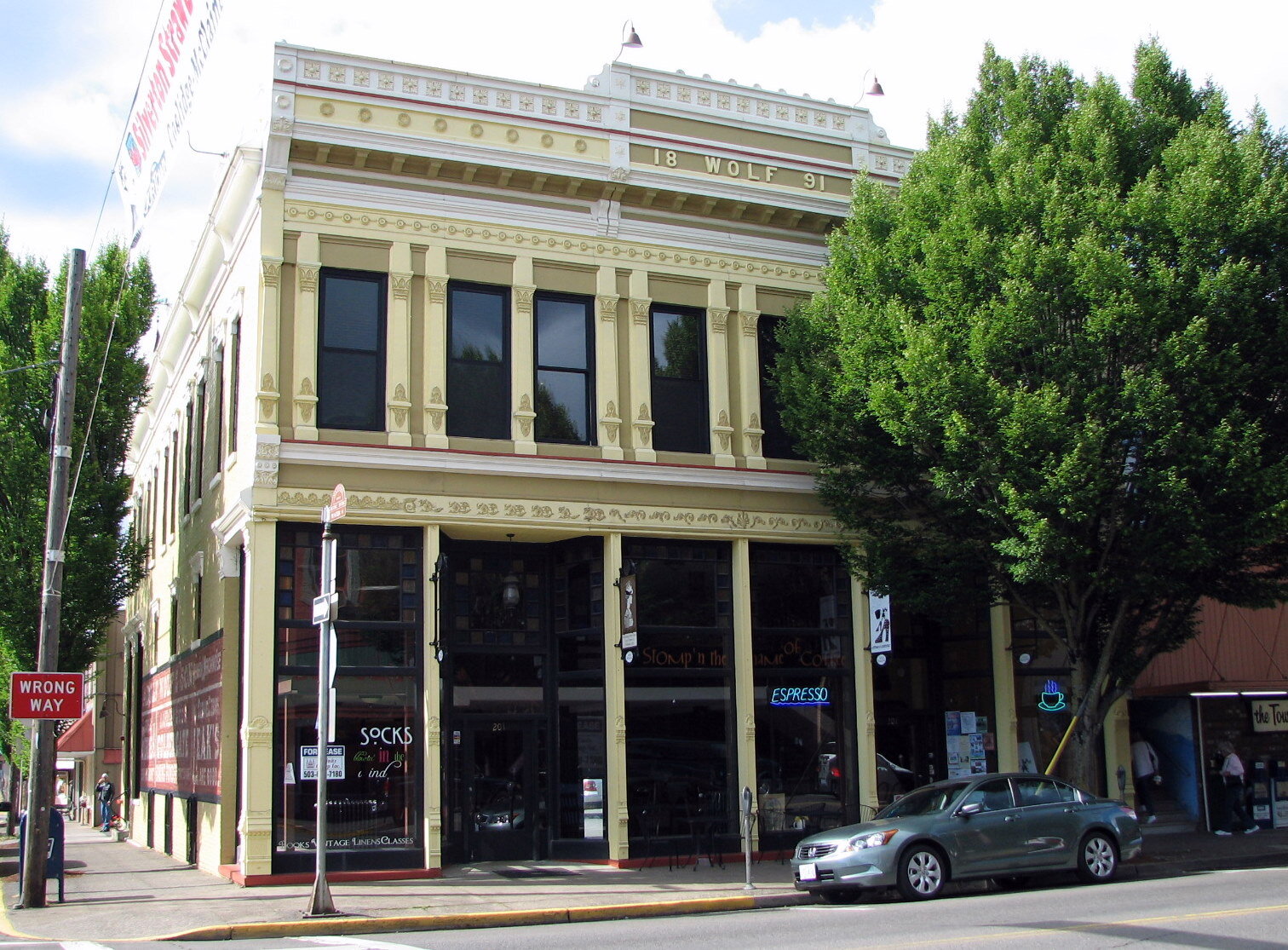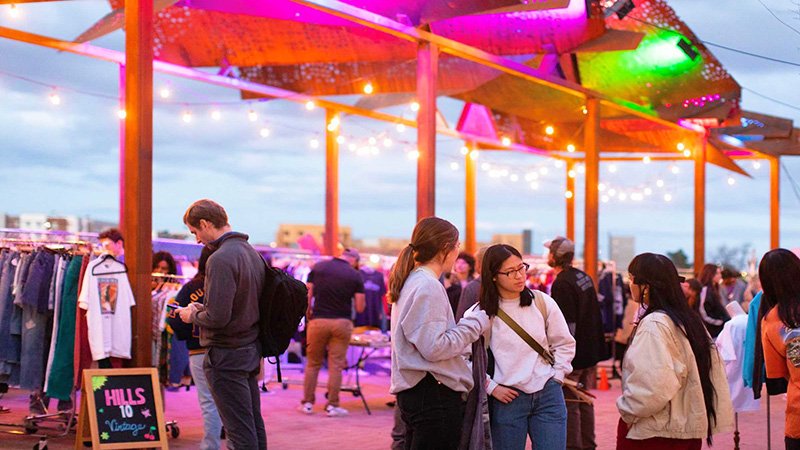The Suburban Experiment vs. Traditional Development: 7 Key Differences
Photo of Silverton, Oregon from the Silverton Country Historical Society (Facebook)
Over the last seventy years—a blink of the eye in the long history of city-building—we have transformed the North American continent with an approach to development that represents one of the biggest, swiftest, and, in hindsight, costliest human experiments ever conducted. At Strong Towns, we’ve dubbed it the Suburban Experiment. Below, I’ve summarized some of the differences between how humans have traditionally built cities and how we build them in North America today. But first I want to clear up two common misconceptions about the Suburban Experiment:
The Suburban Experiment isn’t limited to the suburbs.
The Suburban Experiment isn’t defined by the automobile.
The Suburban Experiment isn’t limited to the suburbs. In fact, if we’re not careful, the suburbs can become a convenient but misleading foil for city people and rural people looking to deflect our own implication in the Suburban Experiment—and our own necessary role in changing it. So abruptly and so completely has our development pattern changed, we’re all “Suburbanites” now.
The Suburban Experiment isn’t defined by the automobile. We have a lot to say about cars here at Strong Towns: why we need to slow them down (and how), why we must build towns and cities for people rather than cars, why and how to curb our car-dependence, and more. Yet the defining characteristic of the North American Suburban Experiment isn’t the automobile.
So what is its defining characteristic? It is in how we build.
As Strong Towns president Chuck Marohn describes in our free Strong Towns 101 course, the Suburban Experiment builds all at once and to a finished state. A brand new development appears where only yesterday (or so it seems) valuable farmland had been. The usual cluster of fast food chains put up “template stores” at the new interchange. A big box store comes to town, bringing with them a few weeks of hype—but also multiple generations of taxpayer obligations, because what will happen to that massive building and the acres of parking lot when the hype dies down, the tax subsidies expire, and the corporation moves on?
“The Suburban Experiment builds all at once and to a finished state....[Then] we freeze what we’ve built in regulatory amber.”
In the Suburban Experiment, there’s little opportunity for adaptation or natural redevelopment. We freeze what we’ve built in regulatory amber.
“We design [what we build] to resist change,” Chuck says. Which is another way of saying that we’ve designed it to decline. Because, for thousands of years, allowing a city to flex and breathe and grow and heal has been the way cities have built wealth and resilience. Chuck wrote this back in 2012:
A city built in the traditional development pattern—the human settlement approach used for millennia across geographies and cultures—has high upside and low downside. In periods of robust growth, it will prosper. In periods of stagnation and decline, it will not fall apart or implode but actually experience innovation and undergo renewal. This is beyond resilience; it is antifragile.
Last year, I created this chart to contrast how we build cities today with how our ancestors built cities (and how many towns and cities around the world are allowed to develop today). It’s by no means exhaustive, but it’s been a useful tool to share with Strong Towns newcomers, on the community site, and even with family and friends, when I want to summarize the differences between the traditional development pattern and the Suburban Experiment. I’ve updated the chart slightly from the original, and I’ve included some links for further reading below.
1. Origins
Traditional Development Pattern: Developed across time, in many different places, and in widely divergent contexts (peace and war, feast and famine, etc.). The result of thousands of years of tinkering.
The Suburban Experiment: Developed in a unique place and time, and based on the assumptions of abundance and endless growth. An abrupt experiment (the largest human experiment ever attempted), it changed everything all at once.
Further reading:
2. How We Build
Traditional Development Pattern: Builds over time. It learns and adapts as circumstances change. It tends to be human-scaled, with a fine-grained mix of uses.
The Suburban Experiment: Builds all at once and to a finished state. Then what we build is frozen in place. It is designed to resist growth, and often it is trapped in regulatory amber as well.
Further Reading:
3. Where the Energy Comes From
Traditional Development Pattern: From the bottom, up. Inefficient, but smart.
The Suburban Experiment: From the top, down. Orderly, but dumb.
Further Reading:
4. Scale
Photo of Silverton, Oregon from the Silverton Country Historical Society (Facebook)
Traditional Development Pattern: Scaled to walking: “A person living in a frontier town in the early 1900s, or Manhattan of the same period, could have bought a meal, earned a paycheck, and found a place to sleep, all within a reasonable walk.”
The Suburban Experiment: Scaled for cars: “We have developed different building types, different development styles, and different ways of arranging things on the landscape, all to accommodate a living arrangement based on automobile travel.”
Further reading:
“How Did We Get Used to Out-of-Scale Cities,” by Felix Landry
“Why Walkable Streets Are More Economically Productive,” by Rachel Quednau
“We Should Be Building Cities for People, Not Cars,” by Devon Zeugel
Both the above quotes are from Strong Towns: A Bottom-Up Revolution to Rebuild American Prosperity, by Charles Marohn
5. Balancing Multiple Priorities
Traditional Development Pattern: Imperfectly harmonizes many competing priorities over time.
The Suburban Experiment: Doesn’t perceive a need to harmoniously balance multiple things simultaneously.
Further Reading:
6. Response to Adversity
Traditional Development Pattern: Gets feedback, learns, and adapts.
The Suburban Experiment: Throws more money at the problem...usually borrowed money.
Further Reading:
7. Resilience
Traditional Development Pattern: Antifragile: Complex, emergent systems that are strong, adaptive, resilient.
The Suburban Experiment: Fragile: Not complex but merely “complicated,” which makes communities brittle.
Further Reading:
The Wolf Building in downtown Silverton. Built in 1891, the building is now home to Main Street Bistro. Image via Wikipedia.
What’s interesting is to see these two development patterns contrasted from one another within the same city, sometimes separated only by a block or two. I can look back at historical photos of my own rural town of Silverton, Oregon and see that it was birthed and nurtured according to principles that would have been recognizable to their city-building ancestors. Silverton’s founders bequeathed to future generations a legacy of wealth in the form of a strong downtown, walkable core neighborhoods, beautiful parks, and more.
Yet I also see—and have lived in—neighborhoods here that have all the characteristics of the Suburban Experiment mentioned above.
Think back to an experience you had in a community that developed according to the “spooky wisdom” of our ancestors. (This could be a different city you’ve visited, a different neighborhood in your own city, or your own neighborhood.) Now remember an experience you had in a neighborhood developed according to the conventional 20th-century approach. Compare and contrast those experiences. Where did you see the differences outlined above demonstrated in the day-to-day of everyday life? We’d love to hear your experiences.








From arbitrary restrictions to overly harsh penalties, many homeowners associations (HOAs) do little to endear themselves to their neighborhoods. But your city may have more responsibility for these conditions than you realize.